PAPYRI
More Collections
On board ship in 1915 Kelsey encountered David Askren, an American missionary doctor who lived in the Fayoum region of Egypt. Among Askren's patients were local farmers, who were discovering papyri and manuscripts, and the shopkeepers to whom they gave them. Askren became an important contact for Kelsey in obtaining manuscripts and papyri for Michigan as well as other institutions and collectors. With Kelsey as the go-between, Askren also assisted Charles Freer and J. P. Morgan to obtain rare manuscripts from dealers in Cairo.
For his purchases Kelsey sought the financial assistance of wealthy Detroiters of the late 19th- and early 20th-century industrial world, and he often collaborated with other universities and museums to purchase large lots of material that no one of them could afford on its own. He had a selfless attitude toward collecting and often shared information freely with colleagues in the United States and abroad. His outlook was international, and his concern was for the value to human knowledge of the materials he and others collected.
The papyri acquired by Kelsey and those derived from his excavations at Karanis became the core of the University of Michigan Papyrology Collection, one of the most prestigious collections of ancient manuscripts in the world.
-
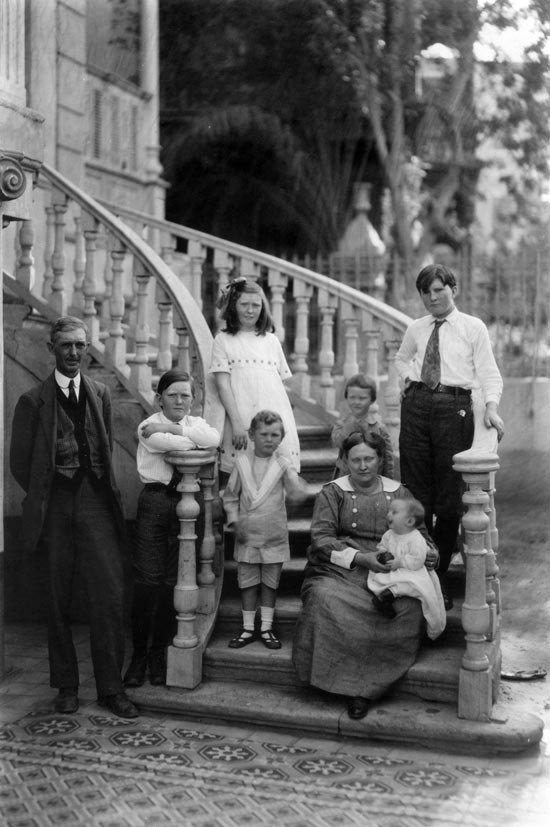
Dr. David Askren and family at their home in Medinet-el-Fayoum, Egypt, April 29, 1920 Photo: George R. Swain, Kelsey Museum neg. 7.0367
-
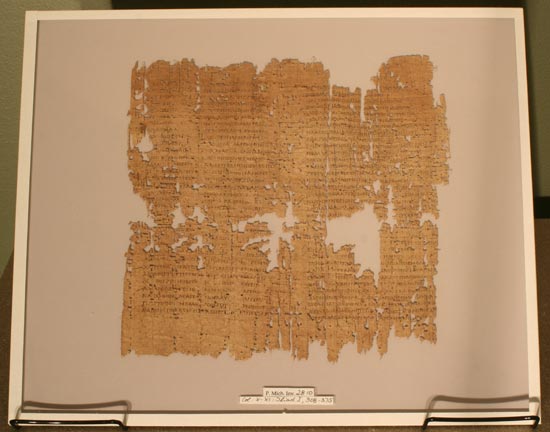
Homer's Iliad book 1. Egypt, Karanis, Fayum. Greek; 2nd century ad The Papyrology Collection, Harlan Hatcher Graduate Library. P. Mich. inv. 2810
Click on the picture to enlarge
This papyrus was found in 1924 in Karanis, during Kelsey's excavations. The large fragment is from a book-roll that contained the first book of Homer's Iliad. The two preserved portions contain parts of the middle and end of the book—Achilles' conversation with his mother Thetis and her intervention on his behalf with Zeus. Note the neat handwriting and the layout of the text in columns.
-
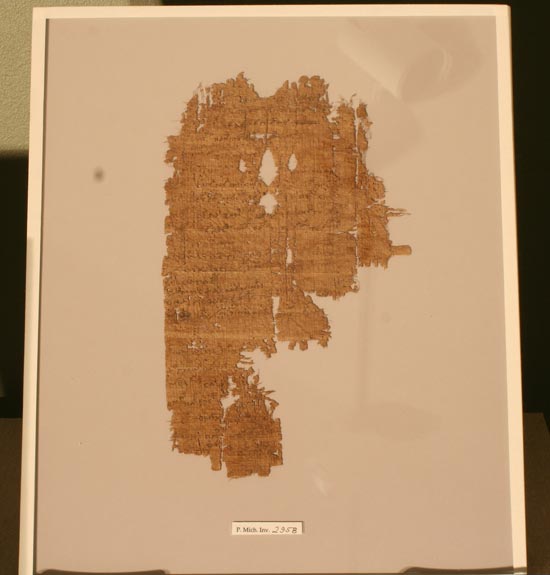
Click on the picture to enlarge
Tragedy with musical notation. Egypt, Karanis, Fayum. Greek with vocal notation. Mid-2nd century ad The Papyrology Collection, Harlan Hatcher Graduate Library. P. Mich. inv. 2958
This very unusual musical papyrus was probably used for performance. The text, likely a tragedy about the mythological character Orestes, is divided into two distinct sections. The first contains an emotional dialogue between two actors. The second has a simpler vocal part and is probably a choral response. The use of the Greek vocal notation system is very sophisticated and indicates a high degree of specialized technical knowledge on the part of the scribe, who may well have been the composer of the music.
-
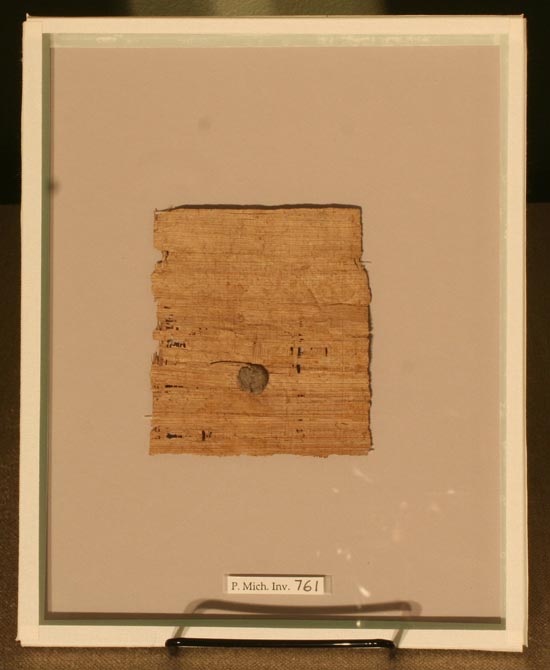
Letter with its seal. Papyrus and ink. Egypt. 7th century ad The Papyrology Collection, Harlan Hatcher Graduate Library. P. Mich. inv. 761
This papyrus letter was obtained in Egypt by F. W. Kelsey in April 1920 through Dr. David Askren, who assisted Kelsey with many such purchases for the University of Michigan. It has never been opened.
-
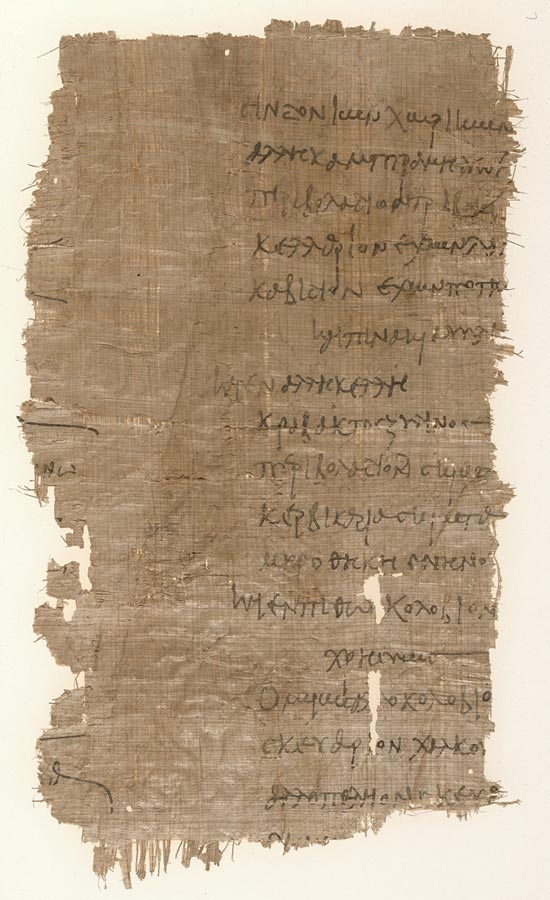
Click on the picture to enlarge
List of household items. Egypt, Karanis The Papyrology Collection, Harlan Hatcher Graduate Library. P. Mich. inv. 5167
-
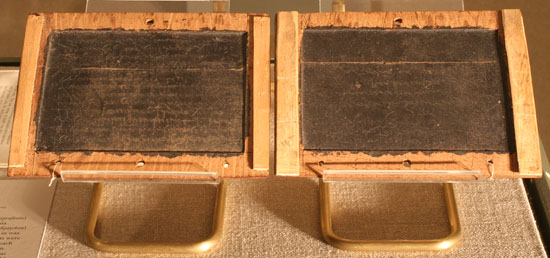
Click on the picture to enlarge
Birth certificate of Herennia Gemella. Ink and wax on wood tablets. Egypt, written in Alexandria, found in the Fayum. Roman period, August 13, 128 ad The Papyrology Collection, Harlan Hatcher Graduate Library. P. Mich. inv. 766
This is a certificated copy of the declaration (professio) in Latin of the birth of a Roman girl, Herennia Gemella. The text is written twice on a pair (diptychon) of wood tablets with the declaration inscribed in wax on the inner side of each tablet. The two tablets were then placed together with the wax sides facing each another and officially sealed by the seals of seven witnesses. Only the copy of the same text that was written on the wood cover (scriptio exterior) could be read without breaking the seals.
Kelsey published this tablet in this article entitled "A Wax Tablet of the Year 128 ad," Transactions of the American Philological Association 54 (1923).
-
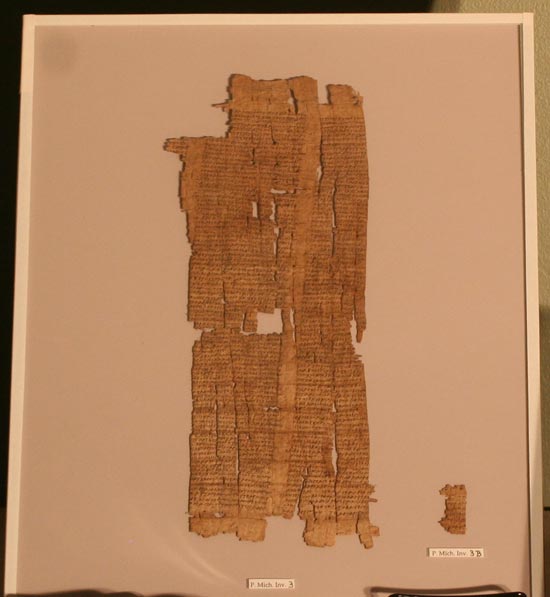
Click on the picture to enlarge
Dioscorides, Materia Medica 2.76.2 and 76.7-18
Greek medical text. Purchased in Egypt by F. W. Kelsey and B. P. Grenfell in April 1920. Second half of 2nd century ad (before 192/193 ad) The Papyrology Collection, Harlan Hatcher Graduate Library. P. Mich. inv. 3 (1738)
The preserved text gives instruction for preparing various kinds of animal fat and marrow for medicinal use.
-
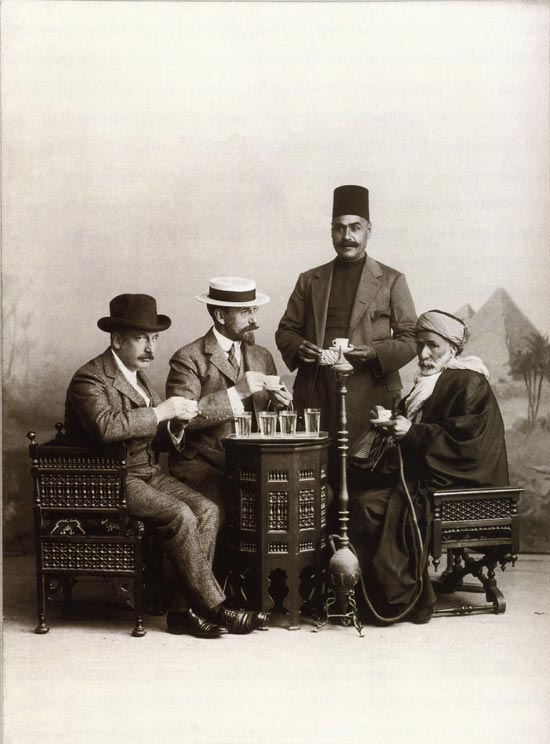
Charles L. Freer buying manuscripts in Cairo Freer Gallery of Art Archives, Smithsonian Institution, Washington, DC
-
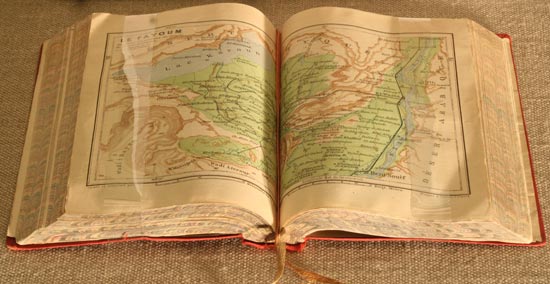
Baedecker's Egypt (1914 edition) with foldout map of the Fayum. Kelsey's personal copy Kelsey Museum Archives